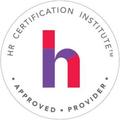Healthy Performance Management - Exploring the Intersection with Employee Well-being

Thanks to all who attended the Performance Management exchange meeting on Healthy Performance Management, and a warm welcome to our guests from the Employee Well-Being Exchange.
Top 4 things we explored.
1. i4cp’s Holistic Well-Being Model leads to better market performance.
Carol Morrison shared the 6-element definition and the business case for investing in well-being initiatives for employees. Watch her 13-minute presentation here.
I4cp holistic well-being definition is a whole-person approach which includes physical, mental/emotional, financial, social/relational, career, and community well-being. The whole-person approach is strongly correlated to better market performance.
High-performing companies are 10x as likely to include opportunities to identify/discuss well-being issues in employee performance discussions.
Find more in the Next Practices in Holistic Well-Being report.
2. Supporting leaders in employee well-being conversations.
Getty Images shared how they support their leaders.
If an employee shares a well-being challenge in an everyday conversation, we encourage empathetic leadership by doing these things:
- Clarify your role.
- To listen and be a safe person with whom they can speak.
- To provide guidance, as applicable and within reason.
- To share resources.
- To not solve, take over, or step into the shoes of another professional (i.e., a licensed therapist).
During a quarterly performance development check-in conversation, we encourage leaders to pick and choose from these questions:
- Share how you are doing and what you are doing to stay connected.
- What do you need to feel accountable, autonomous, and successful in your work?
- What are you doing to stay engaged and connected, and contribute to our Getty Images culture? With the team? Across the business?
- What are you doing to care for your overall health and well-being?
- What additional feedback or observations would you like to share?
Other organizations have provided resources for their managers, too.
This includes training on well-being, a list of benefits and other resources available to employees, etc. Sometimes the number of resources provided can actually be overwhelming.
3. Well-being and performance management can be interdependent.
We encourage focusing on well-being, but how are we holding people accountable to do so? How are we rewarding those who do take an active role in their well-being? It starts with looking at the data.
You need to identify who is participating in well-being programs and break it down by demographics, roles, and other ways to better understand the reach of the program. Then, bring in data to better understand what impact involvement in those programs have on their performance.
There also needs to be connections between well-being and performance management teams. Our breakout groups found that these two parts of the organization may not always be working together.
Managers feel increasing pressure to perform. Even with all the right resources, in can be challenging to balance employee well-being with performance.
4. Other Member Resources.
There are many resources available on the website including:
- Gilead’s Mid-Year Conversation Guide with Well-Being Checklist
- TIAA’s Check-In Conversation Guide
- Discover’s Coaching Guide for Performance Management.
The Performance Management Exchange focuses on discussing the valuable ways that talent and reward leaders are making this possible through:
- simplified, nimble approaches to setting priorities and accountabilities
- purposeful ways that people and teams should collaborate
- principles of safe and engaging feedback
- recognition and reward of exemplary performance
- career tracks and interesting projects / growth opportunities
log in





